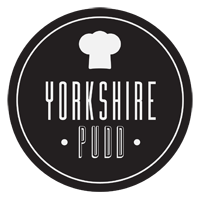Dairy Delights Around the World: Exploring Global Flavors and Traditions
Dairy products have been essential to human nutrition for centuries, providing a rich source of nutrients, vitamins, and minerals. From milk to cheese, yoghurt to butter, the world of dairy offers various delicious and nutritious options for our daily diet. However, with so many choices available, it can be overwhelming to understand the differences and benefits of each dairy product.
This comprehensive guide will explore the various dairy products commonly found in our food, shedding light on their unique characteristics and culinary applications.
From farm to table: The journey of milk
Milk is the most fundamental dairy product and serves as the foundation for numerous other dairy creations. It all starts on the farm, where dairy cows are raised and milked to obtain this nutrient-rich liquid. Raw milk undergoes thorough testing for quality and safety before it is pasteurized to eliminate harmful bacteria, ensuring it is safe for consumption.
With its creamy texture, whole milk contains higher levels of fat and nutrients, making it a popular choice for children and adults alike. Skim milk removes most fat content for those seeking a lower-fat option, providing a lighter alternative without compromising essential nutrients. Additionally, 2% milk balances whole and skim milk, offering a moderate fat content while retaining much of the nutritional value.
From the simplicity of a glass of milk to its versatile applications in cooking and baking, milk is a cornerstone of the dairy world, and its various forms cater to a wide range of preferences and dietary needs. Understanding the distinctions between whole, skim, and 2% milk empowers consumers to make informed choices that align with their health and taste preferences.
Milk is a highly versatile product with so many applications that it’s easy to see why it is so beloved across the globe. For instance, with a whipped cream charger from https://www.nangwizard.net/wholesale/ you can even top off all your favourite desserts with a decadent swirl of whipped cream.
The age-old art of cheese making
Cheese is one of the most diverse and beloved dairy products globally, with an astounding array of flavours, textures, and types. Cheese-making involves coagulating milk, separating the curds from the whey, and then ageing or ripening the curds to develop unique flavours. Each type of cheese undergoes its distinct fermentation and ageing process, resulting in a wide range of tastes, from mild and creamy to sharp and intense.
Soft cheeses, such as Brie and Camembert, are characterized by their smooth and spreadable texture, perfect for pairing with fruits and crackers or spreading on toast. On the other end of the spectrum, hard cheeses like Cheddar and Parmesan boast a crumbly texture and bold flavours, ideal for grating over pasta or adding depth to dishes. Semi-soft cheeses like Gouda and Swiss strike a balance between the two, offering versatility for both snacking and cooking.
Cheese production also extends beyond cow’s milk; various kinds of cheese are made from goat’s, sheep’s, or buffalo’s milk, each contributing its distinct taste and regional traditions. Exploring the world of cheese opens up a delectable journey through international cultures and gastronomic delights, as cheese is an essential ingredient in countless dishes and a gourmet treat.
Yoghurt: A nutrient-rich cultured delight
Yoghurt has gained immense popularity as a wholesome dairy product packed with beneficial probiotics, making it a staple in many health-conscious diets. Made by fermenting milk with live bacteria cultures, yoghurt offers a creamy texture and a slightly tangy taste. These probiotics contribute to gut health and aid digestion, promoting a healthy digestive system.
Greek yoghurt has become a well-known variation of traditional yoghurt, renowned for its thick, velvety consistency and higher protein content. It is an excellent base for smoothies, parfaits, and savoury sauces, adding a nutritional boost to various dishes. On the other hand, regular yoghurt is a versatile ingredient used in baking, dressings, and marinades, enhancing the flavour profile of numerous recipes.
Butter: The flavourful indulgence
With its rich, indulgent flavour, butter is a quintessential ingredient in culinary traditions worldwide. Made by churning cream, butter is a versatile fat that adds depth to both sweet and savoury dishes. Whether used to sauté vegetables, flavour pasta, or create flaky pastries, butter is a kitchen staple cherished by chefs and home cooks.
Different types of butter are available, each offering distinct characteristics. Salted butter provides an extra layer of flavour and is commonly used for cooking and spreading. Unsalted butter offers a purer, more delicate taste, making it ideal for baking and giving cooks more control over the sodium content in their dishes.
All things considered
The world of dairy products is as diverse as it is delicious, with milk, cheese, yoghurt, and butter forming the backbone of countless recipes and culinary traditions. Understanding the nuances and benefits of each dairy product empowers individuals to make informed choices that align with their dietary preferences and nutritional needs.
Whether indulging in a creamy piece of cheese or incorporating probiotic-rich yoghurt into a balanced diet, the various dairy offerings cater to various tastes and dietary requirements. So, the next time you find yourself perusing the dairy section of your local market, you can confidently make your choices, knowing that you are making the most of the cream of the crop in the dairy world.










